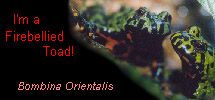GARDENING WITH KIDS

Our two-year-old loves to harvest things from our garden--flowers, pea pods, carrots, lettuce I don't want picked yet--even if he has no intention of eating them. That's okay with me. I figure a little cuddling with the broccoli might spark future interest of the culinary sort. I have to remind myself it's worth losing some blooms, fruits and foliage to promote his interest in plants.
Here's a simple project to try at your home.
- Buy some basil seeds
- Have your child help you almost fill small pots (with holes) or the bottom of an egg carton with potting soil or homemade compost. It's worth buying your kid her own little trowel and watering can. It will keep her busy while you work in the garden--even if she's watering the rocks.
- Place four or five seeds in her hand, have her spill them into the dirt.
- Cover with about 1/8 inch of soil.
- Put pots somewhere in your home that's warm and light. (Once nighttime temperatures are over 50 degrees you can seed outdoors, but it's also fun to have little pots indoors.)
- Water lightly to keep soil moist but not drenched.
- After they sprout, thin the seedlings to 4 inches or more a part. (They'll look the little guys on the left in the photo above.)
- Transition them gradually to outdoors, giving a little more direct light each day for a few days.
- Plant in a sunny spot outside once the p.m. temperature is reliably above 50 degrees. Place in beds or pots, especially self-watering containers. Use improved soil so you won't have to fertilize the plants.
- Harvest sparingly until your plant is about three inches tall, then clip more aggressively if you want.
- Enjoy. Basil is sweet, so you may be pleasantly surprised to discover (if you haven't already) your picky toddler loves fresh pesto. Ours does. You can also make a great kid-friendly pesto with 2/3 basil 1/3 parsley.
- At the end of the season, let your basil bloom and seed. Collect seed, and/or leave seed heads for birds to feed on. Darling little bush tits flock to my basil.

Above: Our son is much more enthusiastic about picking broccoli than eating it. But homegrown broccoli is so much more delicious, much sweeter than store-bought. He
does love eating the peas he shoots out of the pods of our sweet peas. I eat the shells he rejects.
Warning: once you toddler realizes there are edible things in the garden, he will probably want to sample just about every plant you've got. Fortunately, we have very few that are toxic. Nevertheless, it surprised us when our son--who avoids most things that aren't sweet--took a liking to manzanitas, both the flowers and the bitter little berries. It happened after we observed bees drinking from the pink, urn-shaped flowers. He decided to imitate the insects. What a wanna-bee.
Recommended Reading:
- Southern California Gardening by Pat Welsh
- From Seed to Pumpkin (Let's-Read-And-Find-Out Science). Our son has enjoyed this since he was quite young.
- The Urban Homestead by Kelly Coyne and Erik Knutzen.
 Adults often talk with kids about how they're growing, how they used to be a baby, how they'll one day be a man or woman. My 3-year-old says he doesn't want to be a man, only a boy. No worries, I say, you'll always be a boy.
Adults often talk with kids about how they're growing, how they used to be a baby, how they'll one day be a man or woman. My 3-year-old says he doesn't want to be a man, only a boy. No worries, I say, you'll always be a boy.  A couple weeks ago, Eaton Canyon docents had set up a table with magnifying viewers and rubber copies of the tadpole-to-frog cycle. My son looked at them and pronounced, "metamorphosis." (The docents said the tadpoles were either Pacific or California tree frogs.)
A couple weeks ago, Eaton Canyon docents had set up a table with magnifying viewers and rubber copies of the tadpole-to-frog cycle. My son looked at them and pronounced, "metamorphosis." (The docents said the tadpoles were either Pacific or California tree frogs.) This year several people told us the caterpillars they got from Kidspace did not emerge. But we've had good luck with the ones we mail ordered from Insect Lore.
This year several people told us the caterpillars they got from Kidspace did not emerge. But we've had good luck with the ones we mail ordered from Insect Lore.









